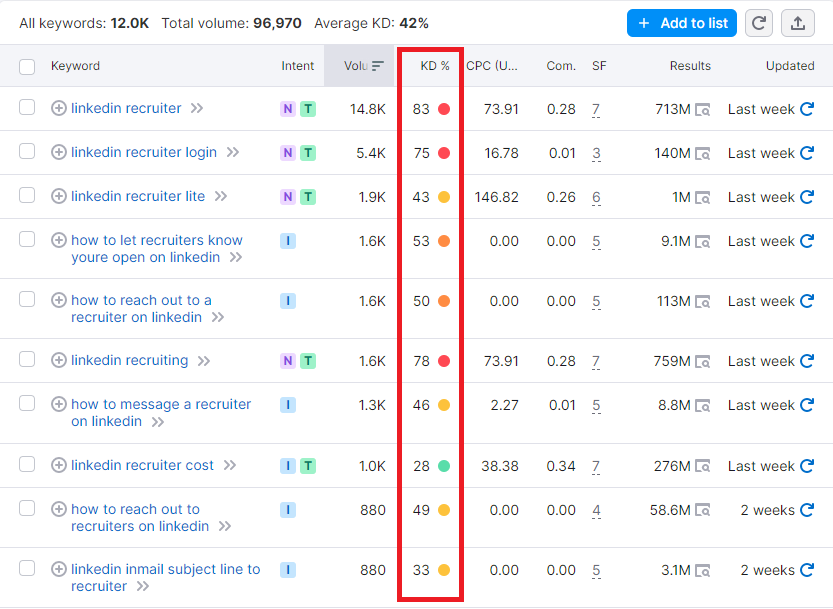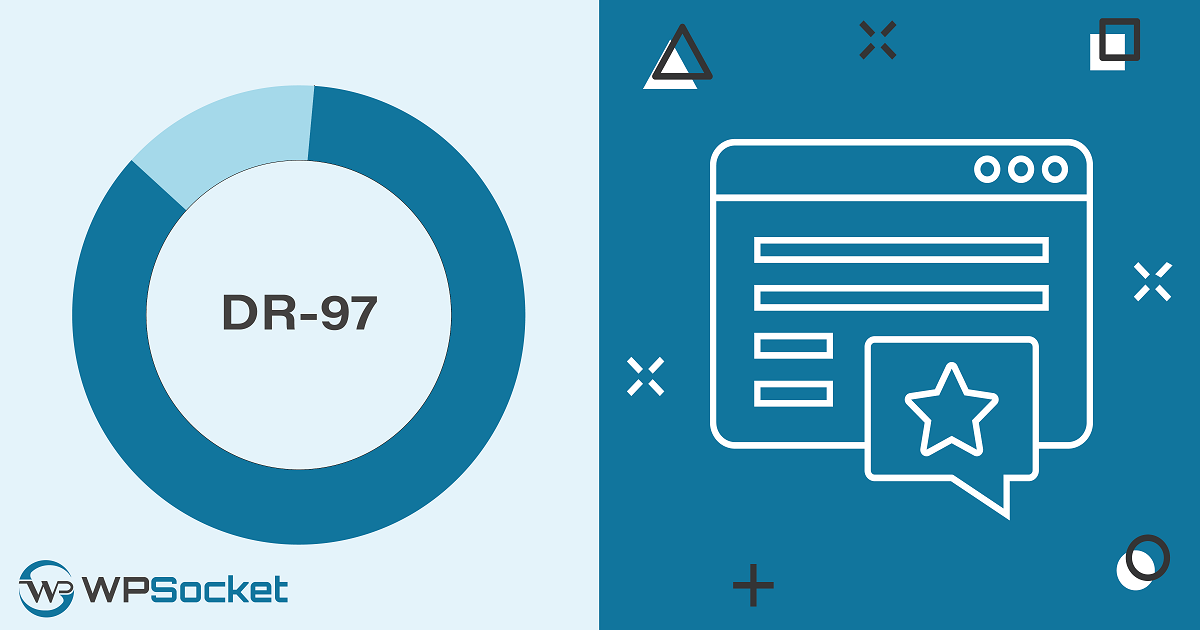If you've a low dr website, you might have to struggle with your SEO and SERP effort. Let's find out how to find rankable keywords for a low dr site
Due to widespread online usage, now everyone trying to establish their brand presence and increase brand awareness online knows how important it's to find keywords that'll rank on search engine result pages (SERP) easily.
However, finding rankable keywords is complicated and tricky, especially for companies that are newly starting their online marketing and search engine optimization.
Because newly created or registered websites have a low domain rating, which is commonly known as its short form "DR." According to many search engine specialists, domain rating plays a crucial role in the SERP ranking factor.
If you have a brand new website with a low domain rating and are confused about how to find rankable keywords for a low dr site, don't worry.
In this article, we'll learn how to find rankable keywords for a low dr site, how to increase domain ratings, and more.

What Is the Domain Rating of A Website?
Ahrefs develop Domain Rating (DR). The domain rating of a website is measured by a number of factors, such as the number of links to the website, the relevancy of those links and link-giving websites, and the quality of those links.
Domain rating is calculated on a scale of 0 to 100. The higher the domain rating a website has, the better chance it has of ranking on search engine results pages (SERPs).
Additionally, keep in mind that different search engine optimization (SEO) tools use different terminology for domain rating metrics.
For instance, as we know, the name "Domain Rating" was developed by AHrefs, but SEMrush refers to it as Domain Authority Score.
No matter what name it goes by, the basic concept is the same: assessing a website's backlink profile, number, quality, and overall SEO factor.
Let's see how domain rating and domain authority score look on Ahrefs and Semrush.
We've entered the website name "Dummies" on Semrush and Ahrefs. Here are the results.
Semrush:

Ahrefs:

You might notice a slight difference in terms of referring domain and number of backlinks because they each have their own algorithms for estimating these metrics. But monitoring keywords or the number of backlinks won't be an issue.
Why Finding Keywords For A Low Domain Rating Site Is Important
When someone starts a new website, it's common to have a low domain rating (DR) due to the lack of or no backlinks and a small number of visitors. Which makes it challenging to rank for competitive keywords on search engine results pages (SERPs).
That's why websites with low DR need to focus on finding easily rankable keywords because by targeting less competitive keywords, websites with low DR can start generating organic traffic and building their backlink profile.
One of the benefits of targeting easily rankable keywords is that they can gradually target more competitive keywords. This approach can help new websites establish a presence on search engines within a short time and build a strong foundation for long-term SEO success.

How To Find Rankable Keywords For A Low Domain Rating Site
Finding rankable keywords for a website with a low domain authority score or domain rating is far easier nowadays. With the right techniques and tools like SEMrush, you can still find rankable keywords for your site.
One way to find rankable keywords for a low DR site is to focus on keyword difficulty. What is keyword difficulty? Keyword difficulty is a metric that gives you an insight into how difficult it would be for you to rank for a particular keyword based on the competition. In general, the lower the keyword difficulty score, the less competition there is for that keyword.
SEMrush is an easy-to-use tool that can help you find low-difficulty, rankable keywords within seconds. Simply enter the topic or keywords of your targeted niche into the Keyword Magic Tool, and you'll see results instantly by keyword difficulty, intent search volume CPC and a few more metrics.
By targeting low-difficulty keywords, you can improve your chances of ranking higher in search results even if your site has a low DR. As your site gains more authority and backlinks over time, you can start targeting the most competitive keyword, which is the short-tail keyword.
Here is a picture of what keyword difficulty metrics on Semrush look like. The red-marked area is dedicated to keyword difficulty.

What Types Of Keywords Should You Target For Low DR Sites?
Nowadays, many types of keywords are available for search engine optimization and content marketing, but the most prominent and primary ones are long-tail and short-tail keywords.
It doesn't matter what type of keyword you select, such as information, commercial or navigational. You'll find all those keywords are based on long-tail, mid-tail, and short-tail keywords
So, which keyword type will be best for websites with low domain ratings or authority scores?
Though there are many opinions available, most search engine optimization experts recommend starting SEO campaigns with long-tail and mid-tail keywords. These types of keywords are more specific and less competitive than short-tail keywords. They can help you easily rank higher in search results and drive more targeted traffic to your site.

Let's know briefly about long-tail and mid-tail keywords.
Long-tail keywords: Sentences that contain three or more words are called long-tail keywords. These keywords are mostly searched by people who know exactly what they want or are looking for.
For example, instead of searching for "Homebuilding," a person might search for "Is homebuilding a good career path."
By targeting long-tail keywords like this, you can attract visitors who are more likely to convert into customers.
Mid-tail keywords: These types of keywords fall somewhere between short-tail and long-tail keywords. They're slightly more specific than short-tail keywords but not as specific as long-tail keywords.
An example of a mid-tail keyword is "amazon freight partner" Targeting mid-tail keywords will also help you attract a larger audience, but at times ranking on search engine result pages with mid-tail keywords are as challenging as short-tail keywords.
Benefits Of Targeting Long-Tail Keywords For Websites With Low Domain Ratings
As we've talked about targeting long-tail keywords, let's see what benefits you'll have after utilizing long-tail keywords.
Targeting the Right Audience: With long-tail keywords relevant to your site's niche, a low-domain rating site can attract the right audience.
Understanding visitor behavior: Using long-tail keywords can help a new website understand what its target audience is searching for.
Competitive Advantage: Long-tail keywords mean low competition. With long-tail keywords, a low-domain rating site can gain a competitive advantage over more established and websites with high DR that target high-competition keywords.
Cost-Effective Marketing: Targeting easily rankable long keywords is cost-effective for a new website to drive traffic if you use digital marketing channels like paid or pay-per-click advertising.

How To Increase Website Domain Rating?
Increasing a website's domain rating is simple yet a bit tricky.
If you're looking to increase your website's domain rating, here are some tips that can help.
Build High-Quality Backlinks: One of the most effective ways to increase your website's DR is to build high-quality backlinks. These are links from other websites that point to your website. The quality of these links is essential, as links from spammy or low-quality websites can have a negative impact on your website's DR.
To get high-quality backlinks, you can reach out to websites related to your industry and ask if they would be willing to link to your content.
Improve Your Content: Without high-quality content, getting backing and ranking on the search engine result page will be difficult. Your content needs to be informative, well-researched, and engaging. When your content is valuable, other websites will give you backlinks even without asking!
Optimize Your On-Page SEO: Optimizing your on-page SEO is another way to increase your website's DR. This includes optimizing your page titles, meta descriptions, images, and header tags. It's also important to use keywords strategically throughout your content, but make sure you don't overdo it, as this can lead to keyword stuffing and harm your website's DR.
Increase Social Shares: Social shares don't directly impact your website's DR, but they can indirectly help. When your content gets shared on social media, it can lead to more traffic and potentially more backlinks. So, make sure to share your content on social media.




